
62 Tips to Reduce Energy Consumption in your Business
Every year, businesses in the UK lose over £60 million in wasted energy. Even without this added waste, running commercial premises’ electric, heating, and water systems represent one of the greatest overhead costs for businesses of all sizes. These reasons alone should be enough to encourage businesses to take measures to reduce their energy consumption. However, as the Earth Overshoot Day happens earlier every year and the climate crisis becomes more severe, as well as an energy pricing crisis that the UK is facing, these measures need to be implemented without delay. Start with these easy tips to reduce your energy consumption and costs by up to 30%.


Share this Image On Your Site
Quickly navigate our energy saving tips:
- Building & Systems
- 1. Invest in high-quality insulation
- 2. Roofing solutions
- 3. Consider installing solar panels
- 4. Invest in cogeneration systems
- 5. Consider smart design elements
- 6. Plant trees
- 7. Install blinds
- 8. Shut off unused areas of the premises
- 9. Always upgrade to better systems
- 10. Use the lean manufacturing approach
- 11. Use production chain control systems to minimise waste
- 12. Adjust automatic doors’ closing delay
- Finding Clean Energy
- Monitoring Energy Usage
- Evaluating the HVAC (Heating, Ventilation and Air Conditioning) System
- 21. Keep up with maintenance
- 22. Leverage fans
- 23. Address leaks
- 24. Invest in a smart thermostat
- 25. Control the temperature
- 26. Increase the temperature of the server room
- 27. Use natural airflow
- 28. Efficient Air Conditioning Units
- 29. Replace old aircon and fan motors
- 30. Variable speed drives (VSDs)
- 31. Chillers/Refrigerator units
- 32. Water side-economizers
- Reconsidering Lighting
- Investing in Office Equipment
- Rethinking Kitchen and Bathroom
- Consider Water Efficiency
- Reconsidering Transportation and Commutes
- Adding The Human Touch
- Bonus tip: Consult an expert, find a tailored solution
Building & Systems
1. Invest in high-quality insulation
No matter how good your systems are, if you have leaks and drafts in your building, your premises won’t be energy efficient. Invest in insulation and double-glazed windows to cut down your energy consumption by 10%.
Don’t forget about ceiling insulation. It is an essential part that helps keep the warmth in during winter and can cool the property in summer. Loft insulation can keep indoors up to 10c cooler during the summer.
2. Roofing solutions
Certain roof tiles are better at reflecting the sun’s rays, or you can paint a roof with heat reflective paint. This reduces the amount of heat absorbed during the summer months and puts less pressure on cooling devices.
3. Consider installing solar panels
Solar panels are a smart long-term strategy to save on energy costs and ensure that the energy used in your business is clean and renewable. Solar panels may have an expensive upfront cost but will recover that over several years. Once installed there are few maintenance issues and they will start to bring down your monthly energy bill.
4. Invest in cogeneration systems
In large facilities, cogeneration energy systems – also known as Combined Heat and Power (CHP) systems – recover waste heat from on-site generators and transform it into water and space heating.
5. Consider smart design elements
If you are building a custom commercial property, you should consider energy-smart design elements such as reflective outside mirrors and rooftop green areas.
6. Plant trees
Planting trees outside of your office building can provide shade and keep the building cool during summer. Trees can also purify the air and create a much healthier home environment for your employees.
7. Install blinds
Depending on where your business’s premises are located, you should consider covering up the windows with blinds. This stops direct sunlight from entering and heating the building. These can be particularly helpful on south-facing windows.
8. Shut off unused areas of the premises
If your business premises are extensive, consider shutting down a whole area and carrying out the work in just a portion of the building. This won’t just reduce running costs, it can also optimise operations.
9. Always upgrade to better systems
Every time your equipment, machinery, or system breaks down, see it as an opportunity to invest in better, more energy-efficient alternatives. This might seem an unnecessary cost at first, but you will be able to count on more efficient tools that will last longer.
10. Use the lean manufacturing approach
Through lean manufacturing, you can optimise your framework and labour, while also reducing the costs associated with the production chain.
11. Use production chain control systems to minimise waste
An automated system or inventory software can help you cut down on the waste and overproduction your business might be producing. By doing so, you can not only reduce your production cost but also streamline your operations.
12. Adjust automatic doors’ closing delay
If your business premises benefit from automatic doors, set up their closing delay time so that they don’t remain open for too long, letting the cold or hot air escape.
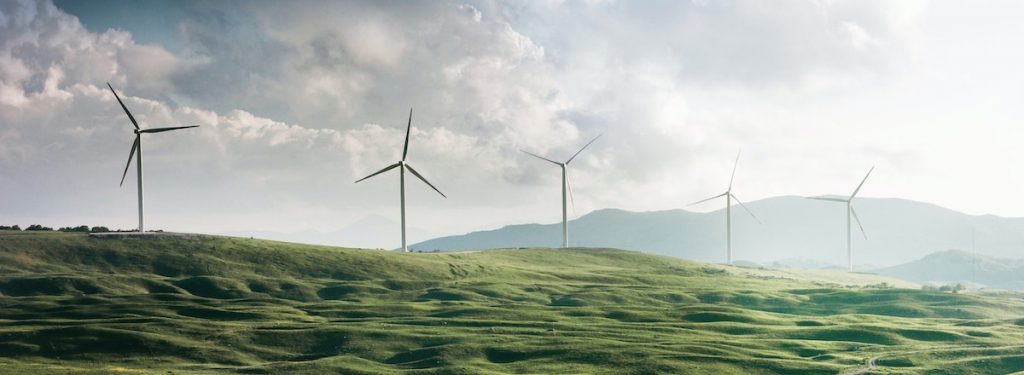
Finding Clean Energy
13. Find The Right Supplier
It is important to find the right energy supplier that will guarantee the right services and customer service you expect. If there is a leak or an issue with your billing, you will want to resolve it immediately!
14. Find a good balance between quality and price
Energy prices are always fluctuating, but they have been on the rise. Make sure you find a supplier that guarantees fixed rates and provides clean, renewable energy.
15.Consider joining a Demand-Side Response program
Dem and-Side Response programs have gained popularity since early 2000. By signing up for this program, you can get rewards by limiting your electricity and power usage in moments of high demand.
16. Leverage incentives
It is always worth checking for tax breaks and incentives made available by the government to upgrade your systems. You might consider using them to install solar panels.
17. Partner with other businesses
Connect with other business owners in the area to help each other and share energy-saving tips. Make sure to check your industry’s standards!
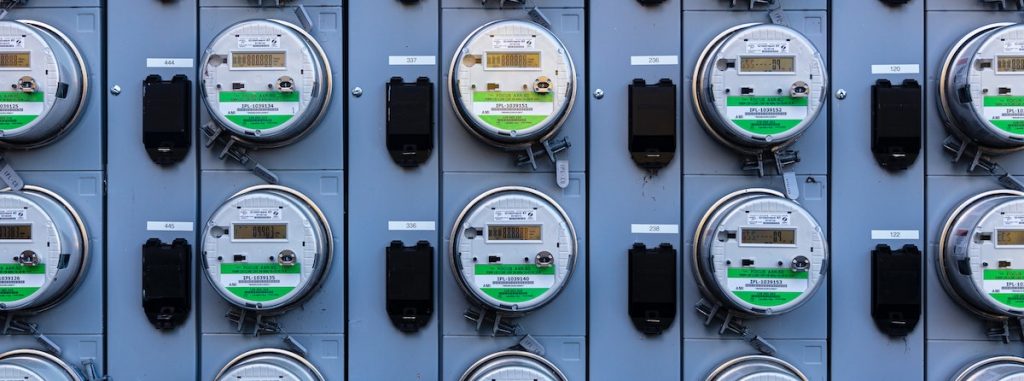
Monitoring Energy Usage
18. Carry out audits
Some energy companies might carry out free energy audits to ensure you are using energy efficiently. If not, hire a professional who can help you evaluate your energy and water usage and identify areas to reduce your energy needs and help you monitor your energy consumption.
19. Have clear sustainability goals
Have a CSR policy in place that determines your business goals in terms of energy-saving and sustainability.
20. Use data analytics
Through data analytics, you can pinpoint energy inefficiencies and identify target focus areas that need attention.

Evaluating the HVAC (Heating, Ventilation and Air Conditioning) System
21. Keep up with maintenance
Your business’s HVAC system is one of the elements that consume the most energy. In most cases, you can cut down between 5% and 40% of the energy used by keeping up with cleaning and maintenance tasks, including:
- Carry out preventive maintenance and inspections
- Keep air filters clean, ideally once a month
- Clean all the heat-exchanging surfaces, water and refrigerants coils, condensers and evaporators.
- Replace malfunctioning insulation systems.
22. Leverage fans
Using fans instead of aircon can help you maintain a healthy work environment by regulating temperature, humidity levels, and air movement.
23. Address leaks
If you have noticed leaks in your HVAC system, make sure you address them immediately. Aside from helping you save on energy costs, quick intervention can prevent costly structural issues such as rotting and mould.
24. Invest in a smart thermostat
Smart thermostats are must-haves for all businesses. Thanks to innovative mobile and web applications, motion sensors, and usage monitoring features, a smart thermostat can help you regulate the temperature with minimal effort or errors. Some are programmable and can automatically adjust temperature settings based on the time of the day and day of the week.
25. Control the temperature
Keep your thermostat at around 25c in summer and 18c in winter. In the summer months, even adjusting your thermostat setting up one degree can typically save 2-3% on cooling costs. Program the temperature with your smart thermostat so that when the building is unoccupied (e.g., weekend and non-working hours) you can adjust the temperature accordingly. Locking the thermostat so it cannot be changed by multiple personal is never a bad idea to help control the temperature as well.
26. Increase the temperature of the server room
It is important to keep your IT equipment cool so it functions properly. The common guidance was to keep it 18c at all times and when you walk into a server room you will notice the drop in temperature from the rest of the building which takes up a lot of electricity.
IT equipment is always improving and recommendations from ASHRAE give a range of temperatures and humidity which range from 18c to 27c, therefore a central set-point of 25.5c with a range of +/- 1.5c would be appropriate if you wanted to reduce the energy cost as much as possible. However, in reality, this may not be sensible as you do not want to risk your servers and IT equipment overheating, therefore maybe consider reducing this by a degree or two to get a cost-saving.
27. Use natural airflow
Open the windows to naturally improve air movement, humidity levels, and air quality – at no cost, when the weather permits of course!
28. Efficient Air Conditioning Units
When the time comes to replace an air conditioning unit of five tons or more, make sure you buy a unit with a high energy efficiency ratio (EER) of 10.5 or more which will reduce the operating costs for the life of the unit. You will need to perform a “Manual N” calculation to select the right sized system based on your building and occupancy needs.
29. Replace old aircon and fan motors
There are motors for aircon and fans which are may be more energy-efficient than your original motor and will reduce your consumption annually, make sure any replacement motor is applicable with your existing unit.
30. Variable speed drives (VSDs)
Install variable speed drives (VSDs) on large motor loads, a small reduction on airflows or pumping speeds (for heating etc) can significantly reduce your energy usage.
31. Chillers/Refrigerator units
In larger commercial refrigerating units (not household kitchen refrigerators), consider the use of modern energy-efficient units that operate at or below .60 kilowatts per ton.
32. Water side-economizers
Water side-economizers are a great solution that offers “free cooling” and can reduce your carbon footprint if you are able to integrate these into your HVAC. A water-side economizer uses the evaporative cooling capacity of a cooling tower to produce chilled water that can be used instead of your chillers/refrigerator units during cold periods, typical during winter.

Reconsidering Lighting
33. Leverage natural light
Studies have found that natural light improves productivity and concentration, regulates mood and morale, and reduces stress and fatigue – while also illuminating for free! Take advantage of this natural daylight and simply don’t have your lights on, or even dim electric lighting, when even natural light is available.
- Use lighting occupancy sensors
Installing lighting occupancy sensors can help you regulate your light usage, without having to constantly remind your employees to switch the lights off. These sensors are a good idea for rooms that are not always in use such as conference rooms, break rooms or individual offices/hot desks that are not often used.
35. Switch to more efficient EXIT signs
EXIT and emergency signs have to be on round-the-clock, but don’t have to cost the earth! Switch to energy-saving bulbs or LED lights which use about a tenth of the wattage and last 50 times longer than a traditional incandescent lamp sign.
36. Reduce the number of fixtures
If you are replacing older fixtures, shop for newer, more efficient lighting options, this will improve the efficiency of your existing fittings, but may also provide more illimitation and allow you to reduce the number of fixtures needed across your permissive.
37. Switch to energy-efficient light bulbs
Switch to one of the following:
- Compact fluorescent lamps (CFLs)
When possible, replace incandescent lamps with CFLs. Make sure you install compatible dimming technology if there is already a dimming system in place.
- T8 (if your office lights use fluorescent T12)
When fluorescent T-12 lamps need replacing you have the option to switch to T-8 lamps and change from magnetic ballast to electronic.
- Light-emitting diodes (LEDs)
LED lights are your best choice – they use up to 75% less energy and they last 25 years longer than standard bulbs.
38. Switch off lights, not in use
Remind your employees to keep lights off in the areas that are not in use to save energy – or invest in occupancy sensors! Don’t forget about any outdoor lights too which aren’t needed during the day. By having lights on less, especially fluorescent lights, it extends the lamp’s life before encouraging a replacement cost too. Ignore the myth that turning lights on and off uses more electricity than leaving them on.
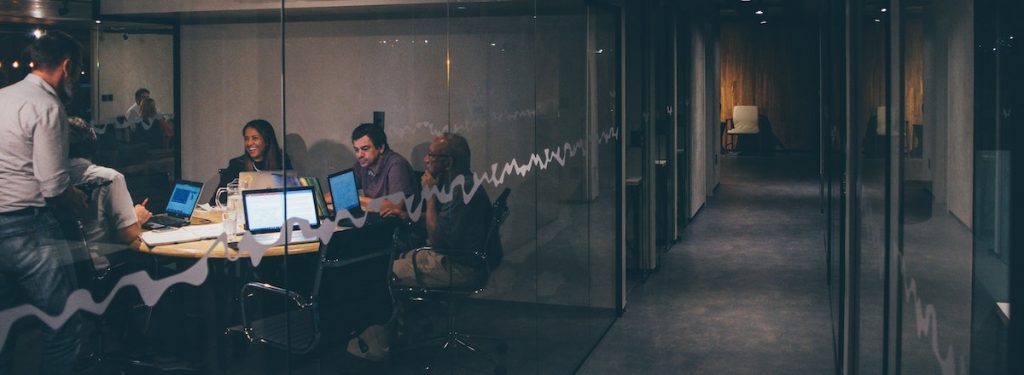
Investing in Office Equipment
39. Consider using a power strip
Devices that are not in use will continue to draw power if they are plugged in. so, consider investing in a power strip to switch them all off when they are not in use.
If laptops are connected, make sure the power strip is off as the AC adaptor will continue to draw in power unless unplugged. If you have these per desk/cubicle you can ensure individual equipment is off for each desk that is unoccupied at the time.
40. Use hibernation feature on devices
During brief moments of inactivity, put your laptop in sleep or hibernation mode to reduce the power it is drawing. Your work will be saved and you can still continue from the same point when you return.
41. Switch off what you don’t use
Make sure that you switch off all equipment when not in use, for example, all printers, scanners, microwaves, lights, air conditioners, vending machines during weekends or holidays. These items still continue to draw power even if when plugged in. Turning them off after working hours will reduce your consumption. When the office isn’t closed during weekends and holidays but during out of office hours, turn off computers, monitors, printers and copiers.
42. Screen savers
Make sure of screen savers and ensure they are compatible with the computer’s power management features, and that power saver mode is turned on.
43. Use laptops instead of desktops
Statistics report that laptops use up to 80% less power than desktops – encourage your employees to bring their laptops or supply them with one to reduce energy.
44. Switch to rechargeable batteries.
Invest in rechargeable batteries for those devices that are still battery-powered.
45. Go paperless
Print only when you must, not only does it save costs on paper and help the environment, it reduces consumption as less energy is used by the printer when ideal compared to being active and printing paper. To help cut down on paper keep your paperwork and compliance online. A cloud system can streamline your operations, give authorized workers access to the right documents, and help you reduce your energy bills.
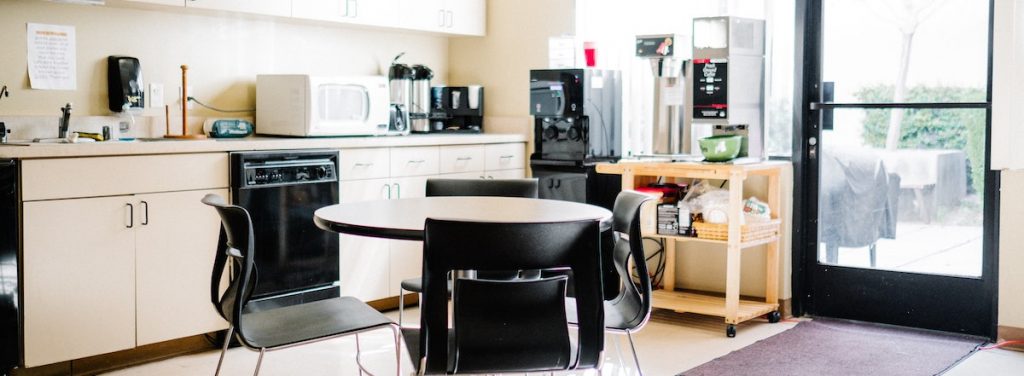
Rethinking Kitchen and Bathroom
46. Upgrade your foodservice equipment
If you operate in the foodservice industry, don’t skimp on equipment’s quality. It might look like you are saving, but you will end up spending more on energy bills.
47. Invest in professional display fridges
If you need display fridges and cabinets, use retrofitted, high-quality models. Ask your seller for the energy-saving features it boasts before purchasing a certain model.
48. Look at how full your freezer or fridge is
It is possible to have an appliance under filed or filled and this leads to inefficiencies in the amount of energy used to run the appliance. Also, take care of restocking large fridge/freezer units during the hottest part of the day.
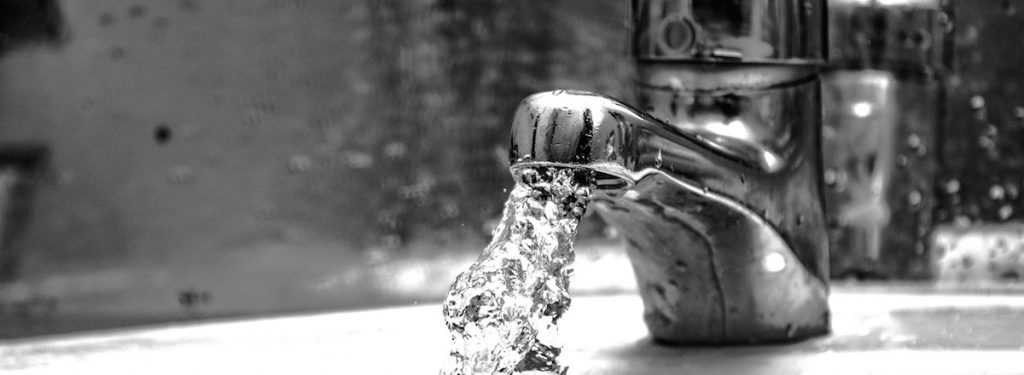
Consider Water Efficiency
49. Upgrade and insulate your water heater
Your water heater needs insulation to be energy-efficient. While newer models will come with integrated insulation, older models will need to be insulated.
50. Set water temperature
Set up the maximum water temperature that is needed in your business to avoid unnecessarily heating water. Not only will it avoid any potential burns or scalding, but it will also reduce your energy bill.
51. Adopt gardening sustainable practices
If your commercial premises have a garden or outside area, make sure to use sustainable business practices when watering, irrigating, or lighting.
52. Use timed, water-saving taps
If you have several bathrooms, make sure to install automatic water-saving taps, urinals, and showerheads to prevent high water bills.
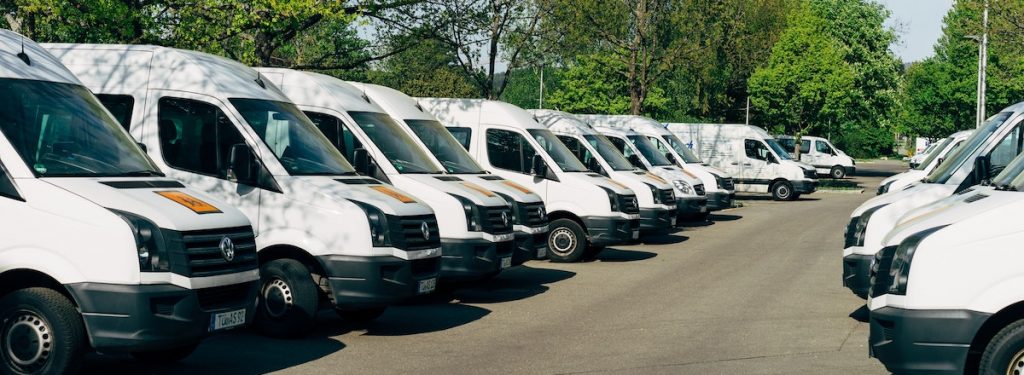
Reconsidering Transportation and Commutes
53. Embrace remote working
During the pandemic, remote working doubled as we were left with very little choice. ONS data showed 25.9% or 8,4 million people in the UK were home working in 2020, up from 12.4% in 2019. Today the UK government is looking at ensuring employers have the right to flexible working as the pandemic has demonstrated that businesses can still operate just as well with greater flexibility.
Embrace remote working to cut down on expenses and physical office space to maintain. Make sure to invest in security systems and VPN technologies to streamline your operations.
54. Hold your meetings virtually
We’ve all got used to virtual meetings while working from home during the pandemic, try to keep this habit in place because these technologies allow us to carry on as business as usual without even going to the office or your client’s office. Face-to-face meetings have their merits, but just remember how much your consumption reduced during lockdowns (and how you should consider a take and pay clause in your energy contract!) and the money you can save on travel.
55. Incentivise sustainable commuting practices
Encourage your employees to use greener transport options such as carpooling, biking, or using public transport. Reward them for their efforts and consider company benefits like a cycle to work scheme.
56. Switch to a greener fleet
If your business requires a fleet, make sure your vehicles run on greener fuels. CNG fuels can reduce emissions and running costs, but don’t forget to consider investing in an all-electric fleet!
Adding The Human Touch
57. Involve your employees
Don’t look at energy-saving as a top-down project, but rather as a communal goal to achieve. Create an open dialogue with your employees, make incentives available, and promise rewards for their efforts. After all, you just won’t be able to control your business’s energy usage without their help!
58. Train your employees
Make sure your employees know how to save energy at work and know what are the best practices to uphold.
59. Select the right suppliers
If you wish to make your business more sustainable, you will need to start by choosing the right suppliers. Even if you try to save energy, if you pick a company that does not uphold sustainability as a value you will be greatly harming the environment!
60. Rethink your policies
Sustainability and energy-saving are important to create the right business image and save money. So, you should designate a responsible party or department in charge of introducing new policies, working with your employees, and monitoring the energy usage in the business.
61. Give back to the community
If you have unused spaces that need to be kept running, you should consider making them available for the community so the energy usage isn’t going to waste. Depending on the kind of business you have, you could open your premises to meetings or classes.
62. Go casual
Drop the uniform and business attire if you can – allow your employees to wear for the weather and cut down on heating or cooling.
Bonus tip: Consult an expert, find a tailored solution
Each business is unique, and, depending on the size, industry, and location of your organisation, there might be some tips that are more effective for your needs. Get in touch to book your energy efficiency audit and turn your commercial premises into an even more sustainable work environment.
